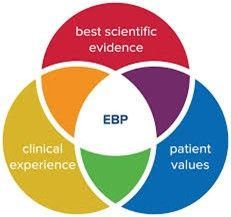Foster Youth and Law Enforcement Needs Multi-Pronged Approach
As a result, rather than simply buckling down on the youth to improve their behavior, a multi-pronged approach needs to occur.

The current view of foster youth is that they are more likely to be involved in law enforcement. While this may be true, it does not cover the reasons why. County child welfare agencies push foster family and residential agencies to keep foster youth out of trouble with the police and sheriff. This is because the time law enforcement takes with runaways or aggression at home removes them from more serious crimes. And the double-edged sword these agencies have is that they are being asked to take on youths with higher acuity but reduce the behaviors that intersect with law enforcement. Subsequently, the focus on the youth is that they’re the “problem” in this situation.
But it’s more complicated than blaming the child. Here are three reasons why:
1. Youths impacted by trauma respond may respond with violence. Dr. John Bowlby, a British psychiatrist and leading expert on attachment theory, found a strong connection between a youth’s abandonment and separation from family and acts of violence. He said in 1973, “The most violently angry and dysfunctional responses of all, it seems probable, are elicited in children and adolescents who not only experience repeated separations but are constantly subjected to the threat of abandonment.” Foster youths are ten times more likely to be arrested than the total youth population. If foster youths come from homes with violence and a lack of attachment to parents, these children have more risk factors for engaging in violence.
2. The behavior of resource parents impacts the youths. Most foster family agencies report that most of their time is spent handling family crises, many of which involve law enforcement. The resource parents may be overwhelmed, lack the training in crisis management, and feel they’d prefer to let the police handle the problem.
3. The intersection of the foster youth and law enforcement is not always positive. Many foster youths grew up in environments of crime and poverty. In these places, the police may have negatively treated them or family, leading to an adverse view of law enforcement. Consequently, many police have sensitivity and knowledge of foster youths, while others lack the knowledge of their circumstances and see the need to talk as “a waste of time.”
How can a youth who’s experienced trauma and violence, sometimes overlapping with the police, expect a positive understanding and be willing to work with the police?
As a result, rather than simply buckling down on the youth to improve their behavior, a multi-pronged approach needs to occur. Resource parents need training on preventive strategies to reduce the youth’s risk behavior (e.g., runaways, aggressive behavior, or harm to self or others). The youth needs crisis and safety plans that use their strengths to improve self-regulation. Finally, foster family agencies can bridge the communication gap between themselves, the resource parents, law enforcement, and youths. Educating all parties on their roles in their approach to foster youths, a shift in attitude occurs. Police understand the foster youth’s perspective on the youth’s fears and needs. In return, foster youth perceive law enforcement as a source of health and safety instead of punishment.




